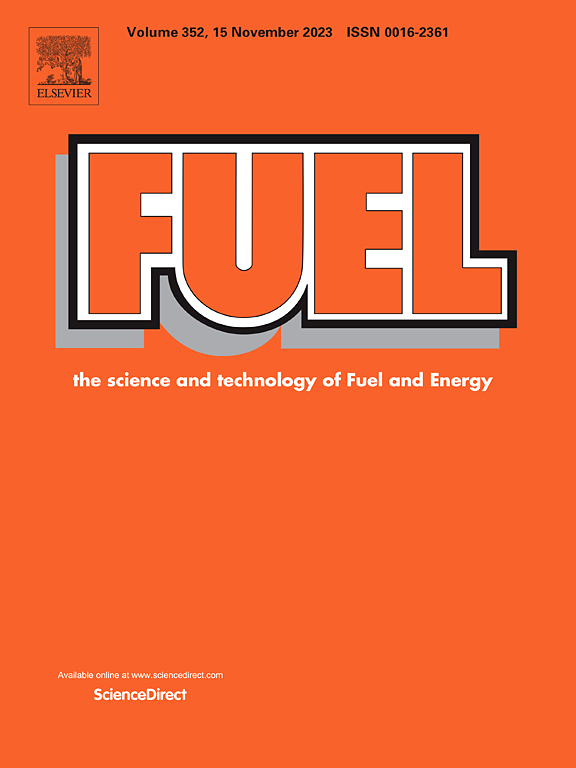Switching low-temperature CO2 hydrogenation product selectivity over metal–organic framework derived Co-based catalyst
IF 6.7
1区 工程技术
Q2 ENERGY & FUELS
引用次数: 0
Abstract
Reductive recycling of CO2 is a promising strategy towards climate and energy issues, while the control of the product selectivity in CO2 hydrogenation has posed an enormous challenge. By utilizing alkali metal promoters, purposeful modification of active sites is expected to realize tuning selectivity in CO2 hydrogenation, while the chemical state and specific role of alkali metal promoters are not fully understood yet. Here, we reported a metal–organic framework (MOF)-transformed carbon encapsulated KMgO/Co nanoparticles catalyst (KMgO/Co@C) with MgO/Co interfaces by solid-state impregnation method, and studied mechanistically about the effect of potassium promoter on overturning the CO2 hydrogenation product selectivity at low temperatures (<350 °C). Experiments coupled with in situ infrared analysis and theoretical calculations revealed that redox pathway occurred on both the potassium-promoted KMgO/Co@C catalyst and the unpromoted MgO/Co@C catalyst, and the addition of potassium promoter to MgO/Co@C catalyst was beneficial for CO production due to the high energy barrier for deep hydrogenation, thus the product selectivity of CO2 hydrogenation switched from 97.13 % CH4 selectivity for MgO/Co@C to 94.11 % CO selectivity for KMgO/Co@C. Most astonishingly, the KMgO/Co@C catalyst exhibited CO2 conversion of 32.46 % at 350 °C, close to the thermodynamic equilibrium conversion (33.93 %), and the exceptionally high STYCO of 81.82 mmol·gcat.−1·h−1 outperformed most of the RWGS catalysts, even surpassed many of the noble metal-based catalysts. This work provides new insights into the role of potassium promoter and emphasizes the crucial role of CO hydrogenation activity in regulating CO2 hydrogenation selectivity over Co-based catalysts, which may inspire the strategic design of advanced low-temperature reverse water–gas shift catalysts.

求助全文
约1分钟内获得全文
求助全文
来源期刊

Fuel
工程技术-工程:化工
CiteScore
12.80
自引率
20.30%
发文量
3506
审稿时长
64 days
期刊介绍:
The exploration of energy sources remains a critical matter of study. For the past nine decades, fuel has consistently held the forefront in primary research efforts within the field of energy science. This area of investigation encompasses a wide range of subjects, with a particular emphasis on emerging concerns like environmental factors and pollution.
 求助内容:
求助内容: 应助结果提醒方式:
应助结果提醒方式:


